sensor
-
 2017 KAIST Research Day Honors Professor Hoon Sohn
The 2017 KAIST Research Day recognized Professor Hoon Sohn of the Department of Civil and Environmental Engineering as Research Grand Prize Awardee in addition to the 10 most distinguished research achievements of the past year.
The Research Grand Prize recognizes the professor whose comprehensive research performance evaluation indicator is the highest over the past five years. The indicator combines the factors of the number of research contracts, IPR, royalty income, as well as research overhead cost inclusion.
During the ceremony, which was held on May 23, Professor Jun-Ho Oh of the Department of Mechanical Engineering and Professor Sang Yup Lee of the Department of Chemical and Biomolecular Engineering also won the Best Research Award. The two professors had the best scores when evaluating their research performance for one-year periods.
Meanwhile, the Research Innovation Award went to Professor YongKeun Park of the Department of Physics. The Research Innovation Award scores the factors of foreign patent registration, contracts of technological transfer and income from technology fees, technology consultations, and startups and selected Professor Park as the top winner.
Professors Yong Hee Lee of the Department of Physics and Jonghwa Shin of the Department of Material Science won the Convergence Research Award. The Convergence Research Award recognizes the most outstanding research team who created innovative research results for a year.
After the ceremony, President Chen Shiyi of the Southern University of Science and Technology gave a distinguished lecture on the “Global & Entrepreneurial Universities for the Age of the Fourth Industrial Revolution.” the Research Day ceremony, KAIST also presented the ten most distinguished research achievements made by KAIST professors during the last year as follows (Click):
▲ Commercialization of 3D Holographic Microscopy by Professor YongKeun Park of the Department of Physics
▲ Designer Proteins with Chemical Modifications by Professor Hee-Sung Park of the Department of Chemistry
▲ Lanthanum-Catalyzed Synthesis of Microporous 3D Graphene-Like Carbons in a Zeolite Template by Professor Ryong Ryoo of the Department of Chemistry
▲ Complete Prevention of Blood Loss by Self-Sealing Hemostatic Needles by Professor Haeshin Lee of the Department of Chemistry
▲ An Immunological Mechanism for the Contribution of Commensal Microbiota Against Herpes Simplex Virus Infection in Genital Mucosa by Heung Kyu Lee of the Graduate School of Medical Science and Engineering
▲ Development of a Pulse-Echo Laser Ultrasonic Propagation Imaging System by Professor Jung-Ryul Lee of the Department of Aerospace Engineering
▲ Bi-refractive Stereo Imaging for Single-Shot Depth Acquisition by Professor Min H. Kim of the School of Computing
▲ Development of Environment Friendly Geotechnical Construction Material Using Biopolymer by Professor Gye-Chun Cho of the Department of Civil and Environmental Engineering
▲ Protein Delivery Via Engineered Exosomes by Professor Chulhee Choi of the Department of Bio and Brain Engineering
▲ Hot Electron Detection Under Catalytic Reactions by Professor Jeong Young Park of the Graduate School of EEWS.
After the ceremony, President Chen Shiyi of the Southern University of Science and Technology gave a distinguished lecture on the “Global & Entrepreneurial Universities for the Age of the Fourth Industrial Revolution.”
(Photo:President Shin poses with the 2017 KAIST Research Grand Prize Winner Professor Hoon Sohn on May 23.)
2017.05.23 View 14857
2017 KAIST Research Day Honors Professor Hoon Sohn
The 2017 KAIST Research Day recognized Professor Hoon Sohn of the Department of Civil and Environmental Engineering as Research Grand Prize Awardee in addition to the 10 most distinguished research achievements of the past year.
The Research Grand Prize recognizes the professor whose comprehensive research performance evaluation indicator is the highest over the past five years. The indicator combines the factors of the number of research contracts, IPR, royalty income, as well as research overhead cost inclusion.
During the ceremony, which was held on May 23, Professor Jun-Ho Oh of the Department of Mechanical Engineering and Professor Sang Yup Lee of the Department of Chemical and Biomolecular Engineering also won the Best Research Award. The two professors had the best scores when evaluating their research performance for one-year periods.
Meanwhile, the Research Innovation Award went to Professor YongKeun Park of the Department of Physics. The Research Innovation Award scores the factors of foreign patent registration, contracts of technological transfer and income from technology fees, technology consultations, and startups and selected Professor Park as the top winner.
Professors Yong Hee Lee of the Department of Physics and Jonghwa Shin of the Department of Material Science won the Convergence Research Award. The Convergence Research Award recognizes the most outstanding research team who created innovative research results for a year.
After the ceremony, President Chen Shiyi of the Southern University of Science and Technology gave a distinguished lecture on the “Global & Entrepreneurial Universities for the Age of the Fourth Industrial Revolution.” the Research Day ceremony, KAIST also presented the ten most distinguished research achievements made by KAIST professors during the last year as follows (Click):
▲ Commercialization of 3D Holographic Microscopy by Professor YongKeun Park of the Department of Physics
▲ Designer Proteins with Chemical Modifications by Professor Hee-Sung Park of the Department of Chemistry
▲ Lanthanum-Catalyzed Synthesis of Microporous 3D Graphene-Like Carbons in a Zeolite Template by Professor Ryong Ryoo of the Department of Chemistry
▲ Complete Prevention of Blood Loss by Self-Sealing Hemostatic Needles by Professor Haeshin Lee of the Department of Chemistry
▲ An Immunological Mechanism for the Contribution of Commensal Microbiota Against Herpes Simplex Virus Infection in Genital Mucosa by Heung Kyu Lee of the Graduate School of Medical Science and Engineering
▲ Development of a Pulse-Echo Laser Ultrasonic Propagation Imaging System by Professor Jung-Ryul Lee of the Department of Aerospace Engineering
▲ Bi-refractive Stereo Imaging for Single-Shot Depth Acquisition by Professor Min H. Kim of the School of Computing
▲ Development of Environment Friendly Geotechnical Construction Material Using Biopolymer by Professor Gye-Chun Cho of the Department of Civil and Environmental Engineering
▲ Protein Delivery Via Engineered Exosomes by Professor Chulhee Choi of the Department of Bio and Brain Engineering
▲ Hot Electron Detection Under Catalytic Reactions by Professor Jeong Young Park of the Graduate School of EEWS.
After the ceremony, President Chen Shiyi of the Southern University of Science and Technology gave a distinguished lecture on the “Global & Entrepreneurial Universities for the Age of the Fourth Industrial Revolution.”
(Photo:President Shin poses with the 2017 KAIST Research Grand Prize Winner Professor Hoon Sohn on May 23.)
2017.05.23 View 14857 -
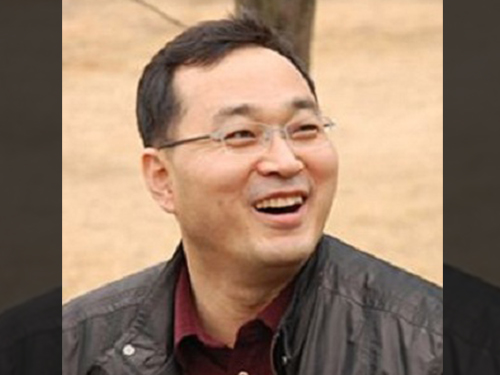 Professor Junehwa Song Appointed as the General Chair of the Organizing Committee of ACM SenSys
Professor Junehwa Song from the Schooling of Computing at KAIST has been appointed the general chair of the organizing committee of ACM SenSys—the American Computing Machine (ACM) Conference on Embedded Networked Sensor Systems.
ACM SenSys held its first conference in 2003 to promote research on wireless sensor networks and embedded systems. Since then, it has expanded into an influential international conference especially with the increasing importance in sensor technologies. Recently the committee has expanded its field of interest to mobile sensors, the Internet of Things, smart device system, and security.
Professor Song is considered a world-renown researcher in mobile and ubiquitous computing system. He presented numerous research papers at various conferences organized by ACM. He is also a member of the editorial committee of the Institute of Electrical and Electronics Engineers (IEEE) Transactions on Mobile Computing journal. For his achievements in the field and flair for coordinating and planning conferences, he is now the first Korean researcher to be appointed the chair of ACM SenSys.
Professor Song said that, as the chair, he would help discover new technology in and applications of networked, wireless sensors that would meet the demands of our modern society.
The 13th ACM SenSys will take place in Seoul—the first one to be held in Asia. The event will begin on November 1, 2015 and last four days. More information about this year’s event can be found at http://sensys.acm.org/2015/.
2015.10.02 View 8423
Professor Junehwa Song Appointed as the General Chair of the Organizing Committee of ACM SenSys
Professor Junehwa Song from the Schooling of Computing at KAIST has been appointed the general chair of the organizing committee of ACM SenSys—the American Computing Machine (ACM) Conference on Embedded Networked Sensor Systems.
ACM SenSys held its first conference in 2003 to promote research on wireless sensor networks and embedded systems. Since then, it has expanded into an influential international conference especially with the increasing importance in sensor technologies. Recently the committee has expanded its field of interest to mobile sensors, the Internet of Things, smart device system, and security.
Professor Song is considered a world-renown researcher in mobile and ubiquitous computing system. He presented numerous research papers at various conferences organized by ACM. He is also a member of the editorial committee of the Institute of Electrical and Electronics Engineers (IEEE) Transactions on Mobile Computing journal. For his achievements in the field and flair for coordinating and planning conferences, he is now the first Korean researcher to be appointed the chair of ACM SenSys.
Professor Song said that, as the chair, he would help discover new technology in and applications of networked, wireless sensors that would meet the demands of our modern society.
The 13th ACM SenSys will take place in Seoul—the first one to be held in Asia. The event will begin on November 1, 2015 and last four days. More information about this year’s event can be found at http://sensys.acm.org/2015/.
2015.10.02 View 8423 -
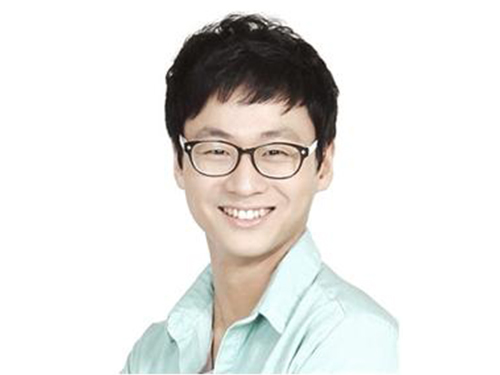 Dr. Hyundoo Hwang Receives a Tenured Position at Monterrey Institute of Technology and Higher Education
Hyundoo Hwang, a former graduate student in the Department of Bio & Brain Engineering at KAIST, has been granted a tenured position at the Monterrey Institute of Technology and Higher Education (ITSEM), Mexico.
Dr. Hwang received his bachelor’s, master’s, and doctoral degree at KAIST and started his professorship at Ulsan National Institute of Science & Technology (UNIST) in Korea. He continued his research in the United States as a professor at Georgia Institute of Technology. He has been acknowledged for the development of an advanced nanotechnology for the diagnosis of rare diseases and research in cell signals. He is one of the leading researchers in an international research project in microelectromechanical systems (MEMS) with participation by researchers from over ten countries. He has been active in commercializing biosensor technology in the U.S. and Mexico.
Since its establishment in 1943, ITSEM has grown to 33 campuses in 25 cities in Mexico. It is the largest university in Latin America with over 90,000 students (47% of its graduate students has oversea research experience). It recruits over 5,000 international students and professors every year.
Dr. Hwang will begin teaching at ITSEM as a professor in the Department of Biomedical Engineering (Ingeniería Biomédica) this fall. He will also conduct research in nano- and micro-technology as a member of Sensors and Devices research group.
Professor Gwang Hyun Cho, head of KAIST's Department of Bio and Brain Engineering said that Dr. Hwang’s tenure professorship at ITSEM demonstrated that the academic program at KAIST—from undergraduate to doctoral—was on par with the international standard. He hoped that more talents from the department would seek academic careers in internationally renowned universities around the world.
2015.08.13 View 7542
Dr. Hyundoo Hwang Receives a Tenured Position at Monterrey Institute of Technology and Higher Education
Hyundoo Hwang, a former graduate student in the Department of Bio & Brain Engineering at KAIST, has been granted a tenured position at the Monterrey Institute of Technology and Higher Education (ITSEM), Mexico.
Dr. Hwang received his bachelor’s, master’s, and doctoral degree at KAIST and started his professorship at Ulsan National Institute of Science & Technology (UNIST) in Korea. He continued his research in the United States as a professor at Georgia Institute of Technology. He has been acknowledged for the development of an advanced nanotechnology for the diagnosis of rare diseases and research in cell signals. He is one of the leading researchers in an international research project in microelectromechanical systems (MEMS) with participation by researchers from over ten countries. He has been active in commercializing biosensor technology in the U.S. and Mexico.
Since its establishment in 1943, ITSEM has grown to 33 campuses in 25 cities in Mexico. It is the largest university in Latin America with over 90,000 students (47% of its graduate students has oversea research experience). It recruits over 5,000 international students and professors every year.
Dr. Hwang will begin teaching at ITSEM as a professor in the Department of Biomedical Engineering (Ingeniería Biomédica) this fall. He will also conduct research in nano- and micro-technology as a member of Sensors and Devices research group.
Professor Gwang Hyun Cho, head of KAIST's Department of Bio and Brain Engineering said that Dr. Hwang’s tenure professorship at ITSEM demonstrated that the academic program at KAIST—from undergraduate to doctoral—was on par with the international standard. He hoped that more talents from the department would seek academic careers in internationally renowned universities around the world.
2015.08.13 View 7542 -
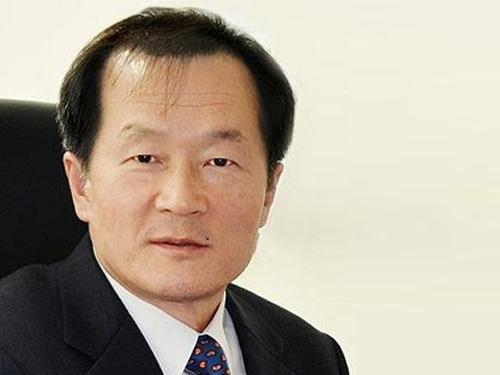 KAIST's Center for Integrated Smart Sensors made a partnership with a Silicon Valley start-up
KAIST's Center for Integrated Smart Sensors (CISS) will implement a joint venture project with Dual Aperture, Inc., a leading digital camera provider based in Palo Alto, California. The two will work on the development of 3-D imaging technology.
CISS, headed by Professor Chong-Min Kyung of Electrical Engineering, KAIST, is dedicated to technological advancement by developing innovative devices, circuits, and smart sensors.
In its press release dated June 18, 2014, Dual Aperture, Inc. stated that “by combining top talents in engineering, the partnership will establish a groundbreaking smart sensor technology accessible on multiple platforms and devices.”
For details, a Fox news article follows below:
Dual Aperture, Inc., June 18, 2014
“Image technology leader and top research institute collaborate engineering resources to create world’s first-ever smart sensor technology”
http://www.fox14tv.com/story/25808022/dual-aperture-announces-joint-venture-with-kaists-center-for-integrated-smart-sensors
2014.06.19 View 9997
KAIST's Center for Integrated Smart Sensors made a partnership with a Silicon Valley start-up
KAIST's Center for Integrated Smart Sensors (CISS) will implement a joint venture project with Dual Aperture, Inc., a leading digital camera provider based in Palo Alto, California. The two will work on the development of 3-D imaging technology.
CISS, headed by Professor Chong-Min Kyung of Electrical Engineering, KAIST, is dedicated to technological advancement by developing innovative devices, circuits, and smart sensors.
In its press release dated June 18, 2014, Dual Aperture, Inc. stated that “by combining top talents in engineering, the partnership will establish a groundbreaking smart sensor technology accessible on multiple platforms and devices.”
For details, a Fox news article follows below:
Dual Aperture, Inc., June 18, 2014
“Image technology leader and top research institute collaborate engineering resources to create world’s first-ever smart sensor technology”
http://www.fox14tv.com/story/25808022/dual-aperture-announces-joint-venture-with-kaists-center-for-integrated-smart-sensors
2014.06.19 View 9997 -
 Nanofiber sensor detects diabetes or lung cancer faster and easier
Metal-oxide nanofiber based chemiresistive gas sensors offer greater usability for portable real-time breath tests that can be available on smart phones or tablet PCs in the near future.
Daejeon, Republic of Korea, June 11, 2013 -- Today"s technological innovation enables smartphone users to diagnose serious diseases such as diabetes or lung cancer quickly and effectively by simply breathing into a small gadget, a nanofiber breathing sensor, mounted on the phones.
Il-Doo Kim, Associate Professor of Materials Science and Engineering Department at the Korea Advanced Institute of Science and Technology (KAIST), and his research team have recently published a cover paper entitled "Thin-Wall Assembled SnO2 Fibers Functionalized by Catalytic Pt Nanoparticles and their Superior Exhaled Breath-Sensing Properties for the Diagnosis of Diabetes," in an academic journal, Advanced Functional Materials (May 20th issue), on the development of a highly sensitive exhaled breath sensor by using hierarchical SnO2 fibers that are assembled from wrinkled thin SnO2 nanotubes.
In the paper, the research team presented a morphological evolution of SnO2 fibers, called micro phase-separations, which takes place between polymers and other dissolved solutes when varying the flow rate of an electrospinning solution feed and applying a subsequent heat treatment afterward.
The morphological change results in nanofibers that are shaped like an open cylinder inside which thin-film SnO2 nanotubes are layered and then rolled up. A number of elongated pores ranging from 10 nanometers (nm) to 500 nm in length along the fiber direction were formed on the surface of the SnO2 fibers, allowing exhaled gas molecules to easily permeate the fibers. The inner and outer wall of SnO2 tubes is evenly coated with catalytic platinum (Pt) nanoparticles. According to the research team, highly porous SnO2 fibers, synthesized by eletrospinning at a high flow rate, showed five-fold higher acetone responses than that of the dense SnO2 nanofibers created under a low flow rate. The catalytic Pt coating shortened the fibers" gas response time dramatically as well.
The breath analysis for diabetes is largely based on an acetone breath test because acetone is one of the specific volatile organic compounds (VOC) produced in the human body to signal the onset of particular diseases. In other words, they are biomarkers to predict certain diseases such as acetone for diabetes, toluene for lung cancer, and ammonia for kidney malfunction. Breath analysis for medical evaluation has attracted much attention because it is less intrusive than conventional medical examination, as well as fast and convenient, and environmentally friendly, leaving almost no biohazard wastes.
Various gas-sensing techniques have been adopted to analyze VOCs including gas chromatography-mass spectroscopy (GC-MS), but these techniques are difficult to incorporate into portable real-time gas sensors because the testing equipment is bulky and expensive, and their operation is more complex. Metal-oxide based chemiresistive gas sensors, however, offer greater usability for portable real-time breath sensors.
Il-Doo Kim said, "Catalyst-loaded metal oxide nanofibers synthesized by electrospinning have a great potential for future exhaled breath sensor applications. From our research, we obtained the results that Pt-coated SnO2 fibers are able to identify promptly and accurately acetone or toluene even at very low concentration less than 100 parts per billion (ppb)."
The exhaled acetone level of diabetes patients exceeds 1.8 parts per million (ppm), which is two to six-fold higher than that (0.3-0.9 ppm) of healthy people. Therefore, a highly sensitive detection that responds to acetone below 1 ppm, in the presence of other exhaled gases as well as under the humid environment of human breath, is important for an accurate diagnosis of diabetes. In addition, Professor Kim said, "a trace concentration of toluene (30 ppb) in exhaled breath is regarded to be a distinctive early symptom of lung cancer, which we were able to detect with our prototype breath tester."
The research team has now been developing an array of breathing sensors using various catalysts and a number of semiconducting metal oxide fibers, which will offer patients a real-time easy diagnosis of diseases.
###
Youtube Link: http://www.youtube.com/watch?v=t_Hr11dRryg
For further inquires:
Il-Doo Kim, Professor of Materials Science and Engineering, KAIST
Advanced Nanomaterials and Energy Laboratory
Tel: +82-42-350-3329
Email: idkim@kaist.ac.kr
Clockwise from left to right: left upper shows a magnified SEM image of a broken thin-wall assembled SnO2 fiber. Left below is an array of breath sensors (Inset is an actual size of a breath sensor). The right is the cover of Advanced Functional Materials (May 20th issue) in which a research paper on the development of a highly sensitive exhaled breath sensor by using SnO2 fibers is published.
This is the microstructural evolution of SnO2 nanofibers as a function of flow rate during electrospinning.
2013.06.20 View 14945
Nanofiber sensor detects diabetes or lung cancer faster and easier
Metal-oxide nanofiber based chemiresistive gas sensors offer greater usability for portable real-time breath tests that can be available on smart phones or tablet PCs in the near future.
Daejeon, Republic of Korea, June 11, 2013 -- Today"s technological innovation enables smartphone users to diagnose serious diseases such as diabetes or lung cancer quickly and effectively by simply breathing into a small gadget, a nanofiber breathing sensor, mounted on the phones.
Il-Doo Kim, Associate Professor of Materials Science and Engineering Department at the Korea Advanced Institute of Science and Technology (KAIST), and his research team have recently published a cover paper entitled "Thin-Wall Assembled SnO2 Fibers Functionalized by Catalytic Pt Nanoparticles and their Superior Exhaled Breath-Sensing Properties for the Diagnosis of Diabetes," in an academic journal, Advanced Functional Materials (May 20th issue), on the development of a highly sensitive exhaled breath sensor by using hierarchical SnO2 fibers that are assembled from wrinkled thin SnO2 nanotubes.
In the paper, the research team presented a morphological evolution of SnO2 fibers, called micro phase-separations, which takes place between polymers and other dissolved solutes when varying the flow rate of an electrospinning solution feed and applying a subsequent heat treatment afterward.
The morphological change results in nanofibers that are shaped like an open cylinder inside which thin-film SnO2 nanotubes are layered and then rolled up. A number of elongated pores ranging from 10 nanometers (nm) to 500 nm in length along the fiber direction were formed on the surface of the SnO2 fibers, allowing exhaled gas molecules to easily permeate the fibers. The inner and outer wall of SnO2 tubes is evenly coated with catalytic platinum (Pt) nanoparticles. According to the research team, highly porous SnO2 fibers, synthesized by eletrospinning at a high flow rate, showed five-fold higher acetone responses than that of the dense SnO2 nanofibers created under a low flow rate. The catalytic Pt coating shortened the fibers" gas response time dramatically as well.
The breath analysis for diabetes is largely based on an acetone breath test because acetone is one of the specific volatile organic compounds (VOC) produced in the human body to signal the onset of particular diseases. In other words, they are biomarkers to predict certain diseases such as acetone for diabetes, toluene for lung cancer, and ammonia for kidney malfunction. Breath analysis for medical evaluation has attracted much attention because it is less intrusive than conventional medical examination, as well as fast and convenient, and environmentally friendly, leaving almost no biohazard wastes.
Various gas-sensing techniques have been adopted to analyze VOCs including gas chromatography-mass spectroscopy (GC-MS), but these techniques are difficult to incorporate into portable real-time gas sensors because the testing equipment is bulky and expensive, and their operation is more complex. Metal-oxide based chemiresistive gas sensors, however, offer greater usability for portable real-time breath sensors.
Il-Doo Kim said, "Catalyst-loaded metal oxide nanofibers synthesized by electrospinning have a great potential for future exhaled breath sensor applications. From our research, we obtained the results that Pt-coated SnO2 fibers are able to identify promptly and accurately acetone or toluene even at very low concentration less than 100 parts per billion (ppb)."
The exhaled acetone level of diabetes patients exceeds 1.8 parts per million (ppm), which is two to six-fold higher than that (0.3-0.9 ppm) of healthy people. Therefore, a highly sensitive detection that responds to acetone below 1 ppm, in the presence of other exhaled gases as well as under the humid environment of human breath, is important for an accurate diagnosis of diabetes. In addition, Professor Kim said, "a trace concentration of toluene (30 ppb) in exhaled breath is regarded to be a distinctive early symptom of lung cancer, which we were able to detect with our prototype breath tester."
The research team has now been developing an array of breathing sensors using various catalysts and a number of semiconducting metal oxide fibers, which will offer patients a real-time easy diagnosis of diseases.
###
Youtube Link: http://www.youtube.com/watch?v=t_Hr11dRryg
For further inquires:
Il-Doo Kim, Professor of Materials Science and Engineering, KAIST
Advanced Nanomaterials and Energy Laboratory
Tel: +82-42-350-3329
Email: idkim@kaist.ac.kr
Clockwise from left to right: left upper shows a magnified SEM image of a broken thin-wall assembled SnO2 fiber. Left below is an array of breath sensors (Inset is an actual size of a breath sensor). The right is the cover of Advanced Functional Materials (May 20th issue) in which a research paper on the development of a highly sensitive exhaled breath sensor by using SnO2 fibers is published.
This is the microstructural evolution of SnO2 nanofibers as a function of flow rate during electrospinning.
2013.06.20 View 14945 -
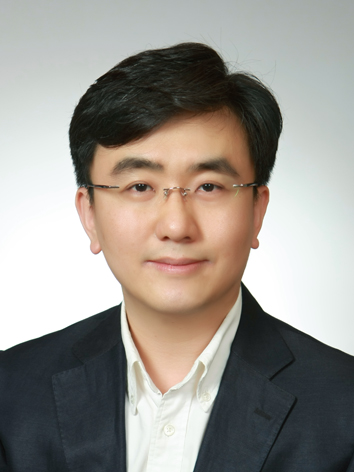 Professor Choi Chul Hui appointed as editor-in-chief of Nanobiosensors in a disease diagnosis magazine
Professor Choi Chul Hui of the Department of Biological and Brain Engineering has been appointed the editor-in-chief of Nanobiosensors, an international medical magazine that concentrates on disease diagnosis.
As the editor-in-chief, Professor Choi will be involved in dissertation evaluations and overall direction of the magazine.
Professor Choi is one of the leading authorities in the field of clinical medicine and has published 60 SCI level dissertations in the fields of cell biology, computational biology, and bio-optics.
He is also the executive director of the KAIST BioImaging Research Center, and his research lab focuses on cell signals and bio imaging. Professor Choi is researching the generation process of degenerative diseases like arteriosclerosis by taking a multidisciplinary approach.
Professor Choi has recently developed a new bio imaging technique that allows for the measurement of perfusion and a new technology for the drug delivery to nerves using ultra short wavelength laser beams.
2011.10.10 View 11448
Professor Choi Chul Hui appointed as editor-in-chief of Nanobiosensors in a disease diagnosis magazine
Professor Choi Chul Hui of the Department of Biological and Brain Engineering has been appointed the editor-in-chief of Nanobiosensors, an international medical magazine that concentrates on disease diagnosis.
As the editor-in-chief, Professor Choi will be involved in dissertation evaluations and overall direction of the magazine.
Professor Choi is one of the leading authorities in the field of clinical medicine and has published 60 SCI level dissertations in the fields of cell biology, computational biology, and bio-optics.
He is also the executive director of the KAIST BioImaging Research Center, and his research lab focuses on cell signals and bio imaging. Professor Choi is researching the generation process of degenerative diseases like arteriosclerosis by taking a multidisciplinary approach.
Professor Choi has recently developed a new bio imaging technique that allows for the measurement of perfusion and a new technology for the drug delivery to nerves using ultra short wavelength laser beams.
2011.10.10 View 11448 -
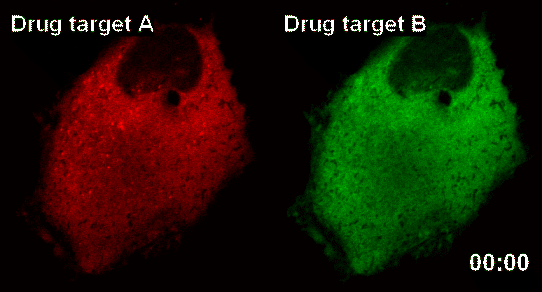 New Technology Developed for Analysis of New Drugs by Using Smart Nano-Sensors
Doctor Sang-Kyu Lee
Doctor Sang-Kyu Lee of the Department of Biological Sciences, KAIST, has developed the technology that allows biological nano particles to be implanted into human cells for monitoring the effect of new drugs in real time from within the cell. It is expected that this technology will boost the ability to weigh the effects and properties of a new drug more quickly and accurately.
Conventionally, the candidate drug was injected into the human body, and then its cells are extracted to analyze the effects of the drugs. The problem with this method was that the cells were analyzed at a ‘dead’ state which made it incredibly difficult to find candidate substances due to uncontrollable side effects. This made the development of new drugs very difficult despite the large costs and efforts invested into its development.
The research team latched onto the idea that nanoparticles can connect to form a large complex. The complex acts as a nanosensor which allows for real time observation of drug target and the drug itself binding.
The team named the nanosensor technology ‘InCell SMART-i’ and was named ‘Hot Paper’ of the September edition of ‘Angewandte Chemie International Edition’ magazine, a world famous Chemistry Magazine.When a new drug injected into the human body, the drug and drug targets are gradually combined, and the smart nanosensor detects in real time the effect of the new drug as shown in the pictures above (shaded spot).
2011.09.19 View 10235
New Technology Developed for Analysis of New Drugs by Using Smart Nano-Sensors
Doctor Sang-Kyu Lee
Doctor Sang-Kyu Lee of the Department of Biological Sciences, KAIST, has developed the technology that allows biological nano particles to be implanted into human cells for monitoring the effect of new drugs in real time from within the cell. It is expected that this technology will boost the ability to weigh the effects and properties of a new drug more quickly and accurately.
Conventionally, the candidate drug was injected into the human body, and then its cells are extracted to analyze the effects of the drugs. The problem with this method was that the cells were analyzed at a ‘dead’ state which made it incredibly difficult to find candidate substances due to uncontrollable side effects. This made the development of new drugs very difficult despite the large costs and efforts invested into its development.
The research team latched onto the idea that nanoparticles can connect to form a large complex. The complex acts as a nanosensor which allows for real time observation of drug target and the drug itself binding.
The team named the nanosensor technology ‘InCell SMART-i’ and was named ‘Hot Paper’ of the September edition of ‘Angewandte Chemie International Edition’ magazine, a world famous Chemistry Magazine.When a new drug injected into the human body, the drug and drug targets are gradually combined, and the smart nanosensor detects in real time the effect of the new drug as shown in the pictures above (shaded spot).
2011.09.19 View 10235 -
 Professor Choi Han Lim receives Automatica Applications Paper Price
Professor Choi Han Lim of the Department of Aerospace received ‘Automatica Applications Paper Prize’ for the first time ever for a Korean.
Professor Choi published a paper in the Automatica magazine with the topic of ‘Continuous Trajectory Planning of Mobile Sensors for Informative Forecasting’.
Professor Choi dealt with most efficient measuring methods for mobile sensor platforms thereby improving the performance of anticipating environmental changes and proposed key theories for problem solving and also an efficient algorithm.
The research was conducted in cooperation with MIT Department of Aerospace Professor Jonathan How with the support of the National Science Foundation.
Automatica
Journal published by the International Federation of Automatic Control and has been awarding the Automatica Paper Prize every three years.
2011.05.31 View 9330
Professor Choi Han Lim receives Automatica Applications Paper Price
Professor Choi Han Lim of the Department of Aerospace received ‘Automatica Applications Paper Prize’ for the first time ever for a Korean.
Professor Choi published a paper in the Automatica magazine with the topic of ‘Continuous Trajectory Planning of Mobile Sensors for Informative Forecasting’.
Professor Choi dealt with most efficient measuring methods for mobile sensor platforms thereby improving the performance of anticipating environmental changes and proposed key theories for problem solving and also an efficient algorithm.
The research was conducted in cooperation with MIT Department of Aerospace Professor Jonathan How with the support of the National Science Foundation.
Automatica
Journal published by the International Federation of Automatic Control and has been awarding the Automatica Paper Prize every three years.
2011.05.31 View 9330 -
 Artificial Spore Production Technology Developed
The core technology needed in the development of ‘biosensors’ so crucial in diagnosing illnesses or pathogens was developed by Korean research team.
KAIST’s Professor Choi In Seung of the department of Chemistry developed the technology that allows for the production of Artificial Spore by selectively coating a live cell.
In the field of engineering the problem in developing the next generation bio sensor, the cell based sensor, was that it was difficult to keep a cell alive without division for a long time. Once a cell is taken out of the body, it will either divide or die easily.
Professor Choi’s research team mimicked the spore, which has the capability to survive harsh conditions without division, and chemically coated a live cell and artificially created a cell similar to that of a spore.
The physical and biological stabilities of the cell increased by coating an artificial shell over the yeast cell. The shell is composed with a protein similar to that of the protein that gives mussels its stickiness. In addition by controlling the thickness of the shell, the division rate of the yeast can be controlled.
Professor Choi commented that this technology will serve as the basis for the single cell based biosensor.
The research was conducted together with Professor Lee Hae Shin of KAIST department of Chemistry and Professor Jeong Taek Dong of Seoul National University’s department of Chemistry and was published as the cover paper of ‘Journal of the American Chemical Society’.
2011.04.01 View 14311
Artificial Spore Production Technology Developed
The core technology needed in the development of ‘biosensors’ so crucial in diagnosing illnesses or pathogens was developed by Korean research team.
KAIST’s Professor Choi In Seung of the department of Chemistry developed the technology that allows for the production of Artificial Spore by selectively coating a live cell.
In the field of engineering the problem in developing the next generation bio sensor, the cell based sensor, was that it was difficult to keep a cell alive without division for a long time. Once a cell is taken out of the body, it will either divide or die easily.
Professor Choi’s research team mimicked the spore, which has the capability to survive harsh conditions without division, and chemically coated a live cell and artificially created a cell similar to that of a spore.
The physical and biological stabilities of the cell increased by coating an artificial shell over the yeast cell. The shell is composed with a protein similar to that of the protein that gives mussels its stickiness. In addition by controlling the thickness of the shell, the division rate of the yeast can be controlled.
Professor Choi commented that this technology will serve as the basis for the single cell based biosensor.
The research was conducted together with Professor Lee Hae Shin of KAIST department of Chemistry and Professor Jeong Taek Dong of Seoul National University’s department of Chemistry and was published as the cover paper of ‘Journal of the American Chemical Society’.
2011.04.01 View 14311 -
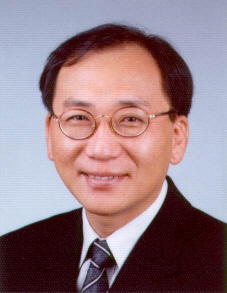 Professor Young-Ho Cho elected as head of international academic conference
KAIST’s Professor Young-Ho Cho of the Department of Bio and Brain Engineering was appointed as the head of the PowerMems (Power Micro Electro Mechanical Systems) symposium to be held at Se-Jong Hotel in Seoul from November 15-18, 2011.
Professor Jo is America’s first engineering doctor in the field of MEMS and is the founding member of the BSAC (Berkeley Sensor and Actuator Center), the start of the MEMS technology.
PowerMEMS is the core of green growth and next generation energy production. It focuses on harvesting energy from minute vibrations or renewable energy sources such as sunlight or plants to harvest and store energy via micro or even nano size systems.
The symposium was first held in 2000, and it is where leading experts in the field share papers on the production and harvesting energy in the micro scale.
2011.01.14 View 12371
Professor Young-Ho Cho elected as head of international academic conference
KAIST’s Professor Young-Ho Cho of the Department of Bio and Brain Engineering was appointed as the head of the PowerMems (Power Micro Electro Mechanical Systems) symposium to be held at Se-Jong Hotel in Seoul from November 15-18, 2011.
Professor Jo is America’s first engineering doctor in the field of MEMS and is the founding member of the BSAC (Berkeley Sensor and Actuator Center), the start of the MEMS technology.
PowerMEMS is the core of green growth and next generation energy production. It focuses on harvesting energy from minute vibrations or renewable energy sources such as sunlight or plants to harvest and store energy via micro or even nano size systems.
The symposium was first held in 2000, and it is where leading experts in the field share papers on the production and harvesting energy in the micro scale.
2011.01.14 View 12371 -
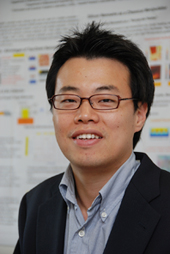 Prof. Park to Receive HP's Annual Innovation Research Award
Prof. In-Kyu Park of the Department of Mechanical Engineering, KAIST, has been will receive an award from Hewlett-Packard"s second annual Labs Innovation Research Program, university authorities said on Wednesday (July 8).
Prof. Park was chosen as the winner of the research award for his paper entitled "Eco-friendly nanomanufacturing for intelligent environment sensing applications."
Sixty projects from 46 universities in 12 countries were selected as the recipients of the awards from HP Labs, the company"s central research arm. The program is designed to create opportunities for colleges, universities and research institutes to conduct collaborative research with HP.
HP Labs Innovation Research Awards provide project funding of up to $100,000 for one year to each of the chosen academic institutions, which is renewable for up to three years based on research progress and HP business requirements.
Prof. Park has conducted joint researches on nanoimprinting, nanosensors, and nanoelectronics with HP"s Information and Quantum Systems Lab since 2005. Starting from the later half of 2009, he is to receive research grants under the industry-academia cooperation program of the world"s information technology giant firm.
2009.07.09 View 16009
Prof. Park to Receive HP's Annual Innovation Research Award
Prof. In-Kyu Park of the Department of Mechanical Engineering, KAIST, has been will receive an award from Hewlett-Packard"s second annual Labs Innovation Research Program, university authorities said on Wednesday (July 8).
Prof. Park was chosen as the winner of the research award for his paper entitled "Eco-friendly nanomanufacturing for intelligent environment sensing applications."
Sixty projects from 46 universities in 12 countries were selected as the recipients of the awards from HP Labs, the company"s central research arm. The program is designed to create opportunities for colleges, universities and research institutes to conduct collaborative research with HP.
HP Labs Innovation Research Awards provide project funding of up to $100,000 for one year to each of the chosen academic institutions, which is renewable for up to three years based on research progress and HP business requirements.
Prof. Park has conducted joint researches on nanoimprinting, nanosensors, and nanoelectronics with HP"s Information and Quantum Systems Lab since 2005. Starting from the later half of 2009, he is to receive research grants under the industry-academia cooperation program of the world"s information technology giant firm.
2009.07.09 View 16009 -
 Korean Researchers Develop Skin-Like Tactile Sensor
THE KOREA TIMES2005.1.31(Mon)
A South Korean scientific research center said Sunday that it has developed a tactile sensor capable of functioning like human skin.
The left picture shows the letters of the Korea Advanced Institute of Science and Technology (KAIST) caught through a tactile sensor functioning like human skin and the right picture is its enlarged image. Scientists from KAIST developed the precision tactile sensor with 1-millimeter spatial resolution.
The tactile sensor is made of polydimethylsiloxane, a synthetic rubber, and has a 1-millimeter spatial resolution capability, the Korea Advanced Institute of Science & Technology (KAIST) said.
``Many tactile sensors have been developed so far, but ours has the highest spatial resolution capability, flexibility, softness and extensibility,’’ said Lee Hyung-kyu, who led the development project.
Late last year, the University of Tokyo unveiled a tactile sensor with a spatial resolution capability of 2 millimeters.
Lee said his team will announce the results of their research at an international conference on micro-electro-mechanical systems, to be held early next month in the U.S. city of Miami.
The new sensor is widely expected to lay the foundation for coating humanoids such as South Korea"s HUBO or Japan"s ASIMO with artificial skin.
HUBO is a humanoid robot recently developed by KAIST. It is capable of moving its fingers independently, dancing and shaking hands with people by using its 41 joints.
Japan"s ASIMO, an acronym for Advanced Step in Innovative Mobility, was unveiled in 2000 as the world"s most advanced bi-pedal robot.
Through several upgrades, it is now able to spin in the air, bend or twist its torso and maneuver around obstacles in its path.
2005.02.02 View 15905
Korean Researchers Develop Skin-Like Tactile Sensor
THE KOREA TIMES2005.1.31(Mon)
A South Korean scientific research center said Sunday that it has developed a tactile sensor capable of functioning like human skin.
The left picture shows the letters of the Korea Advanced Institute of Science and Technology (KAIST) caught through a tactile sensor functioning like human skin and the right picture is its enlarged image. Scientists from KAIST developed the precision tactile sensor with 1-millimeter spatial resolution.
The tactile sensor is made of polydimethylsiloxane, a synthetic rubber, and has a 1-millimeter spatial resolution capability, the Korea Advanced Institute of Science & Technology (KAIST) said.
``Many tactile sensors have been developed so far, but ours has the highest spatial resolution capability, flexibility, softness and extensibility,’’ said Lee Hyung-kyu, who led the development project.
Late last year, the University of Tokyo unveiled a tactile sensor with a spatial resolution capability of 2 millimeters.
Lee said his team will announce the results of their research at an international conference on micro-electro-mechanical systems, to be held early next month in the U.S. city of Miami.
The new sensor is widely expected to lay the foundation for coating humanoids such as South Korea"s HUBO or Japan"s ASIMO with artificial skin.
HUBO is a humanoid robot recently developed by KAIST. It is capable of moving its fingers independently, dancing and shaking hands with people by using its 41 joints.
Japan"s ASIMO, an acronym for Advanced Step in Innovative Mobility, was unveiled in 2000 as the world"s most advanced bi-pedal robot.
Through several upgrades, it is now able to spin in the air, bend or twist its torso and maneuver around obstacles in its path.
2005.02.02 View 15905